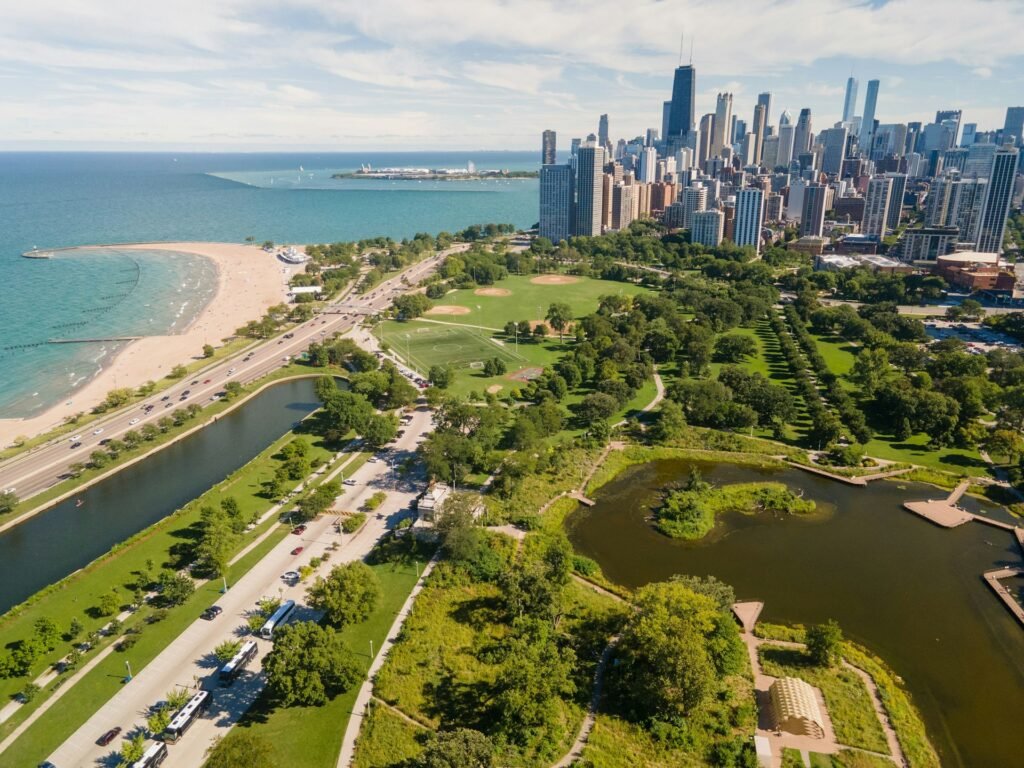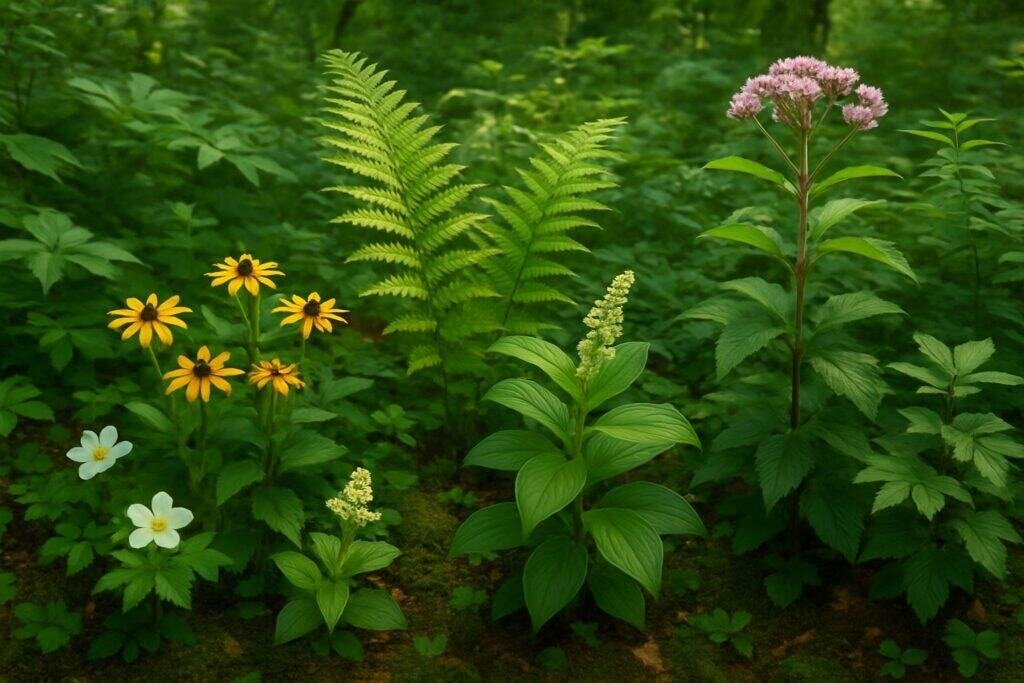In Michigan’s varied climates and landscapes, native plants provide an essential foundation for ecological landscaping. These species evolved to thrive in the local conditions, offering gardeners the opportunity to create vibrant, sustainable spaces. Incorporating plants suited to full sun, partial shade, or even wetland areas allows for a diverse and resilient garden ecosystem. By choosing native species, gardeners not only contribute to the region’s natural beauty but also support beneficial insects and wildlife, creating a harmonious balance between cultivated spaces and the wilds of Michigan.
Understanding the characteristics of Michigan’s native flora, from the sun-loving wildflowers of the prairies to the shade-tolerant ferns of the forest floor, equips gardeners with the knowledge to select plants that will flourish with minimal intervention. The careful selection of these plants not only lessens maintenance efforts but also ensures the garden’s longevity and ecological contribution. By embracing native plants, Michiganders can foster a garden that is both a personal sanctuary and a haven for the region’s diverse wildlife.
The Importance of Native Flora in Michigan Ecosystems
Michigan’s native plants are vital to the health of ecosystems across North America. These indigenous species have co-evolved with local wildlife and are intricately woven into the fabric of the state’s natural habitats. They provide essential food sources and habitats for a range of organisms, from the smallest insects to the largest mammals. Native flora helps maintain the ecological balance and ensures the sustainability of Michigan’s diverse ecosystems.
Benefits to Local Wildlife
Native Michigan plants offer a feast of resources for local wildlife. They furnish nectar, pollen, berries, and seeds, serving as a lifeline for birds, bees, butterflies, and other creatures. These indigenous species create a web of life that is both complex and interdependent, ensuring that each creature has a role and sustenance within the ecosystem.
Enhancing Biodiversity
Introducing native plants into garden spaces plays a crucial role in enhancing biodiversity. Each native species added to a landscape can attract a variety of organisms, which in turn supports a wider range of other species. This chain reaction of biodiversity bolsters ecosystem resilience, helping to maintain a healthy balance and mitigate the impacts of environmental stressors.
Sustainability and Low Maintenance
Gardens featuring Michigan-native plants inherently align with sustainability and require low maintenance. These plants are adapted to the local climate and soil conditions, making them hardy and less susceptible to disease. They typically need less water and fewer fertilizers or pesticides than non-native species, reducing environmental impact and caretaking efforts.
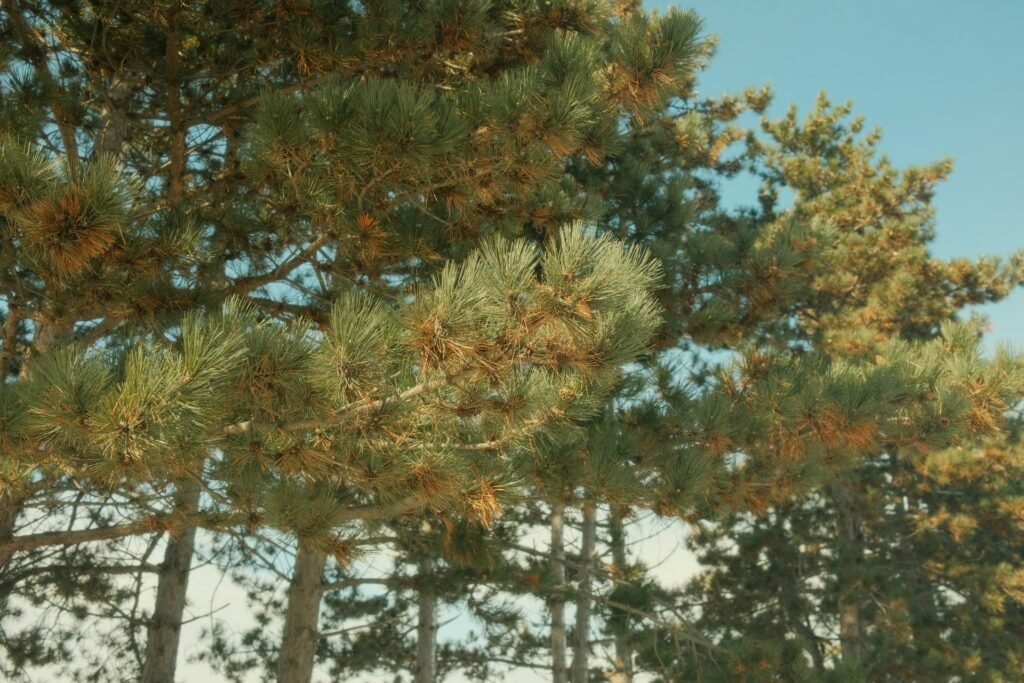
Selecting Michigan Native Plants for Your Garden
Choosing the right native plants for a Michigan garden hinges on understanding the specific conditions of the landscape to ensure the flora will thrive and contribute to local ecosystems.
Assessing Your Landscape’s Conditions
When selecting native plants for a Michigan garden, it’s imperative to consider the unique conditions of your landscape. Evaluating factors such as sunlight, soil type, and moisture levels will guide you in choosing species that are best suited to your garden’s environment, ensuring a thriving, low-maintenance landscape.
Sunlight Levels
Assessing sunlight levels is crucial for plant selection. Michigan native plants vary widely in their sunlight requirements, with some thriving in full sun and others flourishing in partial shade. Understanding the sun exposure in different areas of your garden will help you choose plants that can grow robustly in those conditions.
Soil Type and Moisture
Soil type and moisture levels are also critical for plant health. Some native plants prefer dry, sandy soils, while others require moist, nutrient-rich environments. By matching plants to the soil conditions in your garden, you can ensure better growth and reduce the need for soil amendments.
Native Plant Varieties for Diverse Environments
Michigan offers a wealth of native plant varieties suited to its diverse environments, from forested areas to coastal dunes.
Trees and Shrubs
Trees and shrubs form the backbone of a Michigan native garden, providing structure and habitat. Whether it’s the towering oaks of upland forests or the berry-laden shrubs of wetlands, these woody plants offer year-round interest and support for wildlife.
Perennials and Grasses
Perennials and grasses add texture, color, and movement to the garden. Michigan’s native perennials offer a succession of blooms from spring through fall, while native grasses provide structure and serve as important food and habitat for wildlife.
Sun-Loving Native Plants for Vibrant Landscapes
For those areas bathed in sunlight, Michigan boasts an array of native plants that bring life and color to a garden. These sun-loving species are perfect for creating vibrant landscapes that buzz with activity and interest throughout the growing season.
Prairie Smoke – A Showstopper for Dry Areas
Prairie Smoke, with its feathery seed heads and delicate flowers, is a showstopper for dry, sunny areas of the garden. This plant’s unique appearance adds a whimsical touch, while its drought tolerance makes it a low-maintenance choice for gardeners aiming to create a naturalistic setting.
Lupine – Adding Height and Color
Lupine stands tall in the Michigan landscape, its spikes of blue and purple flowers adding both height and a splash of color. This native plant thrives in full sun, attracting butterflies and bees, and becomes a focal point in any garden dedicated to supporting local ecosystems.
Trillium – Michigan’s Springtime Gem
Trillium, with its tri-petaled flowers, is a beloved harbinger of spring in Michigan. Thriving in woodland settings, this delicate perennial prefers the dappled light under trees. Its pure white, pink, or deep red blooms create a captivating display for any shade garden, embodying the essence of the changing seasons.
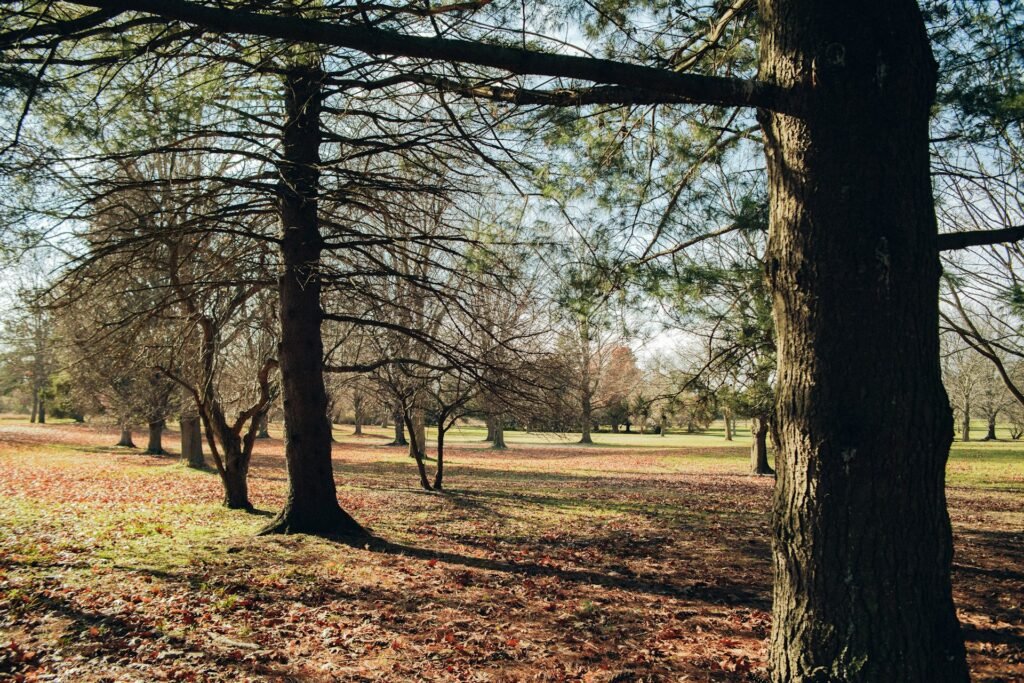
Embracing the Shade: Native Plants for Cooler Areas
Shade gardens can flourish with Michigan’s native plants, which are adapted to cooler, shadowed environments. These plants offer a lush green retreat and create a serene atmosphere, while requiring less maintenance and providing a habitat for local wildlife, demonstrating the beauty of Michigan’s natural landscapes.
Maidenhair Fern – Delicate Foliage for Dense Shade
The Maidenhair Fern is a testament to the elegance that can thrive in the shaded corners of Michigan gardens. Its fine, light green leaves dance on black stems, creating a texture that is both airy and visually striking. This fern flourishes in moist, well-drained soil with partial shade, adding a touch of grace to the understory.
Jack-in-the-Pulpit – Woodland Wonder
Jack-in-the-Pulpit stands out as a unique woodland species with its hooded flowers and striped patterns. This plant prefers the cool, moist soil of Michigan’s forests, where it can grow alongside ferns and mosses. Its intriguing form captivates onlookers and adds a touch of whimsy to any shade garden.
Solomon’s Seal – Graceful Arches of Green
Solomon’s Seal is prized for its arching stems and hanging bell-shaped flowers. This plant brings an architectural element to shade gardens, with leaves that turn golden in the fall. Its ability to spread and form colonies makes it a robust choice for filling spaces with greenery and seasonal interest.
Water Wise: Native Plants for Wet Conditions
Michigan’s native plants adapted to wet conditions are essential for water conservation and managing rainwater runoff. They create a dynamic ecosystem, support diverse wildlife, and add beauty to areas where other plants may struggle, showcasing the versatility of native species.
Joe-Pye Weed – A Magnet for Pollinators
Joe-Pye Weed stands tall in native plant gardens, with its dusty pink flowers that attract butterflies and bees. While often confused with butterfly weed, this plant excels in moist to wet soils, creating a striking display. Its robust nature and value to pollinators make it a must-have for those looking to add life and color to their garden.
Marsh Marigold – Bright Blooms for Boggy Ground
In the wet areas of a Michigan garden, Marsh Marigold shines with its bright yellow flowers. This cheerful plant is an early bloomer, often appearing alongside melting snow in marshy conditions. Its glossy leaves and vibrant blooms bring a splash of sunshine to the damp and dark areas of the landscape.
Blue Flag Iris – Water’s Edge Beauty
The Blue Flag Iris is a stunning native that thrives at the water’s edge, with its sword-like leaves and bold blue-purple flowers. This iris is not only beautiful but also serves a practical purpose, helping to stabilize the soil and filter water, embodying the harmony between function and form in wetland areas.
Attracting Wildlife With Native Species
Introducing native plants into the garden invites a variety of wildlife, from birds to beneficial insects. These species play a crucial role in the local ecosystem, providing food, shelter, and opportunities for natural pest control, enhancing the balance and health of both the garden and the environment.
Creating Habitats for Pollinators and Birds
Designing a garden with native plants creates a sanctuary for pollinators and birds. By offering a diverse array of flowers, seeds, and nesting sites, gardeners can observe the symbiotic relationships that sustain wildlife populations and contribute to the proliferation of these essential creatures.
Plant Selections for a Wildlife-Friendly Garden
Choosing plants for a wildlife-friendly garden involves considering the needs of various species. Native shrubs that produce berries, flowering plants that offer nectar, and grasses that provide cover all contribute to a garden that buzzes with life and supports the natural food web.
Year-Round Interest in Native Plants
Native plants offer more than seasonal blooms; they provide year-round interest with their varied textures, forms, and colors. Even in the dormant seasons, these plants have characteristics that continue to add beauty and intrigue to the landscape, reflecting the enduring charm of Michigan’s flora.
Evergreen Options for Winter Landscapes
Evergreen plants like Eastern Red Cedar and American Holly provide color and structure to winter landscapes. These resilient natives remain vibrant amidst the snow, offering shelter to wildlife and a visual reminder of the enduring life, even in Michigan’s coldest months.
Plants With Attractive Seed Heads and Foliage
Many native plants, such as Purple Coneflower and Little Bluestem, boast attractive seed heads and foliage that persist into winter. These features provide food for birds and create visual interest with their textures and silhouettes against the stark winter landscape, showcasing nature’s subtle beauty.
Sustainable Gardening Practices With Native Plants
Embracing native plants promotes sustainable gardening by aligning with the local ecosystem’s balance. These plants are well-adapted to Michigan’s climate, requiring less artificial support, which in turn reduces the garden’s ecological footprint. By choosing native species, gardeners naturally minimize the need for chemical fertilizers, pesticides, and excessive watering, leading to a healthier environment and a flourishing garden that supports local wildlife and conserves resources.
Natural Pest Control
Michigan native plants often have built-in defenses against local pests, reducing the need for chemical pesticides. Many native plants attract beneficial insects that act as natural pest control agents. For example, the presence of certain native flowers can draw predatory insects that feed on common garden pests. This balance creates a self-regulating garden ecosystem, where the need for human intervention is minimized, and the health of the garden is maintained naturally.
Water Conservation Strategies
Native plants are key to water conservation in Michigan gardens. Adapted to the local rainfall patterns and soil conditions, these plants typically require less water than non-natives, eliminating the need for frequent irrigation. Gardeners can further conserve water by practicing rainwater harvesting and by designing landscapes that maximize water absorption and minimize runoff, ensuring that every drop of water is used effectively to support a lush, sustainable garden.
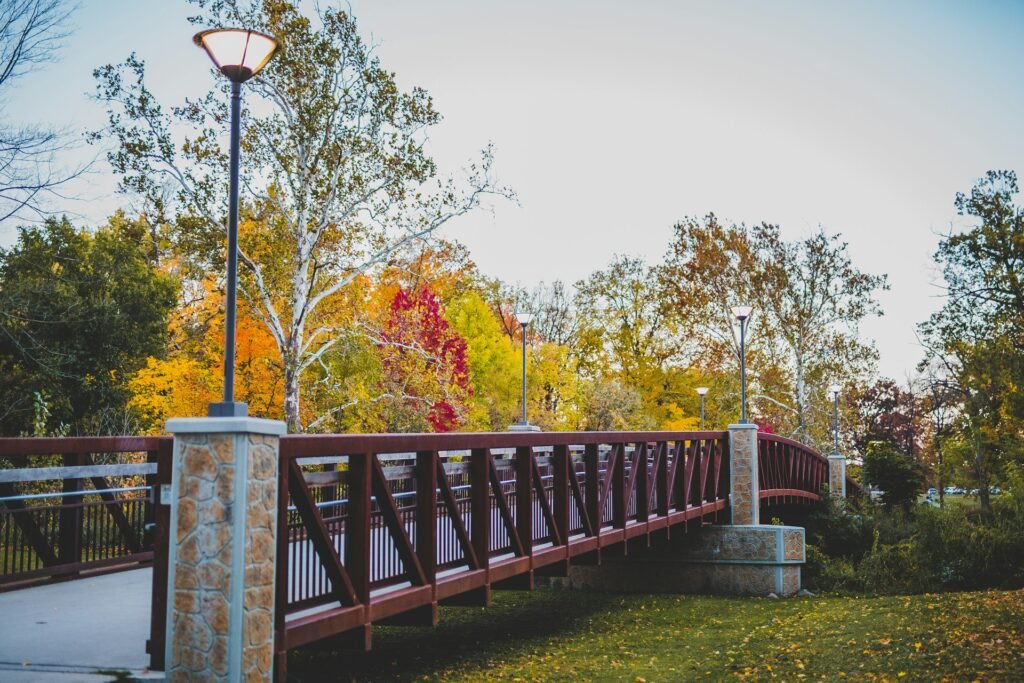
Embracing Michigan’s Natural Beauty: A Conclusion on Native Plants
In the embrace of Michigan’s natural beauty, gardeners who choose native plants such as Monarda fistulosa, commonly known as wild bergamot, or the vibrant bee balm with its lavender flowers, contribute to a landscape that celebrates the region’s ecological heritage. The moist soil of Michigan woodlands is the perfect environment for the striking cardinal flower, Lobelia cardinalis, and the sunny fields come alive with the bright petals of black-eyed Susans. Gardeners can delight in the subtle charm of Aquilegia canadensis and the towering presence of yellow giant hyssop, each species playing a pivotal role in the state’s diverse ecosystems. Together, these plants offer a palette for painting Michigan’s outdoor canvas — one that supports wildlife, conserves water, and sustains the unique character of this great state.

